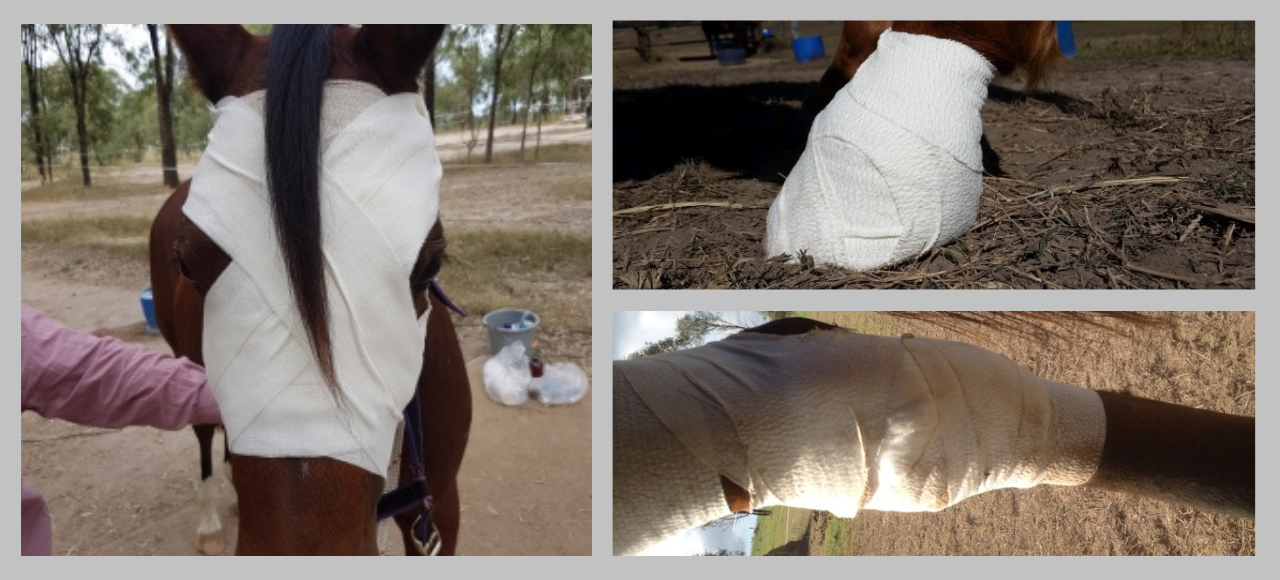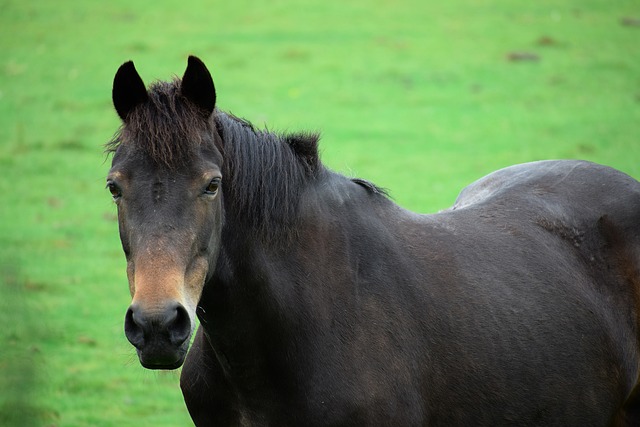
Correct Bandaging is one of the most important parts of wound management. Too tight and the circulation is compromised. Too loose and the bandage falls down and doesn’t provide the protection it needs to.
Guide to Proper Bandaging
- If the wound is between the knee and the fetlock, make sure to bandage the full leg between the joints to minimise potential swelling as blood will tend to pool above the fetlock joint if there is bruising that slows circulation or if horses movement is restricted. Vet Wrap is the perfect bandage to use for these situations.
- Bandaging below the fetlock to the coronet needs an adhesive bandage to keep it in place, otherwise it will ride up and sit around the fetlock. Light Rip is ideal for this area as it has elastic to provide firmness without being too tight, yet can be stuck to the hair or hoof to keep it from moving. The adhesive in Light Rip is a medium level that means it stays put, but will come off easily when pulled and doesn’t pull the hair out.
- For wounds around joints such as knee or hock, you may use a combination of Vet Wrap for the main wrapping over padding and Light Rip at top and bottom to help hold in place. Other times, just using the Light Rip will be appropriate, where the additional stickiness, without too much pressure is required.
- For maximum support, where you want the bandage to stay in place for a longer time and need full support without stretch, then Elastoplast is ideal. Just remember that the adhesive in it is meant to stay attached, so only put a small amount over the edge of the padding to stick to the hair, as you won’t get it off without ripping hair out.
Please note:
If you are wrapping with any pressure make sure there is adequate padding under the bandage so that circulation is not affected. Leave a little padding out the top and bottom of the bandage so the edges don’t dig in and have a tourniquet effect.
CONCLUSION
In conclusion, mastering bandaging techniques is a vital skill for every horse owner when it comes to equine first aid. Properly bandaging horse wounds can aid in their healing process. It can also prevent complications, and ensure the well-being of our equine companions.
